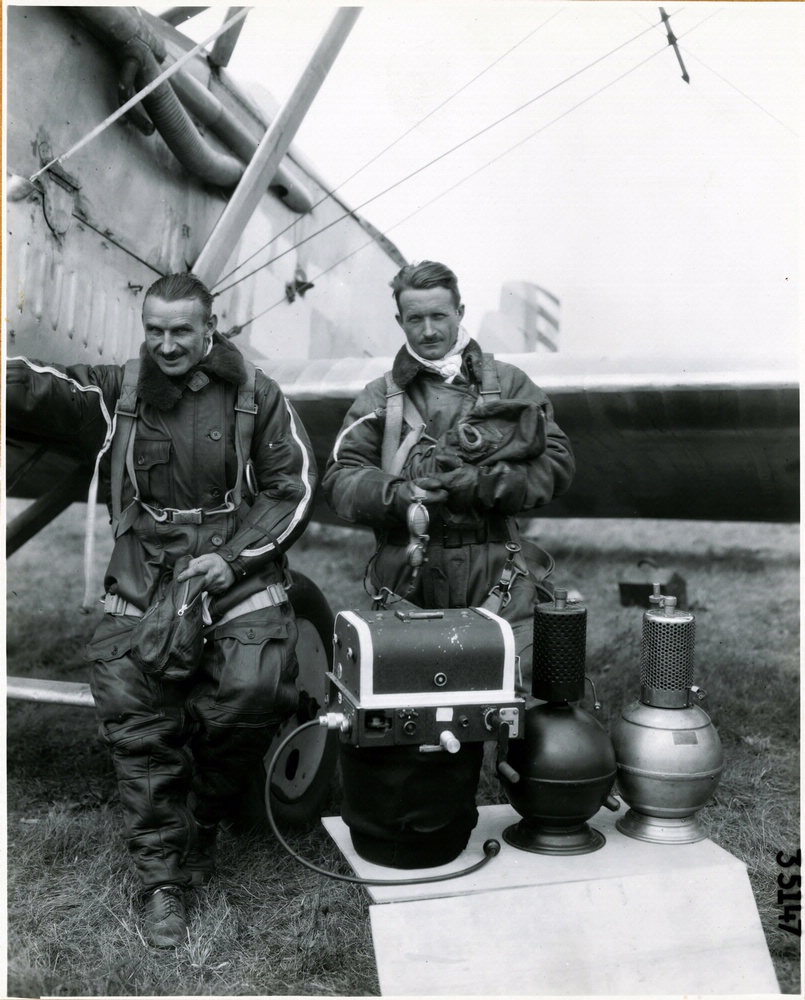Balloons float. Filled with hot air or a gas lighter than air, balloons fly because they weigh less than the air they displace. Some can fly much higher than an airplane.
Explorer II flew so high that it had to have a special gondola (cabin) so its pilots could survive at extremely high altitudes.
An aerial photography pioneer and World War I veteran, Captain Albert Stevens had earned a reputation for courage and innovative thinking. In 1932 he convinced the Army Air Corps to enter the field of high-altitude ballooning, and he enlisted the financial support of the National Geographic Society. Stevens' efforts in Explorer I and Explorer II led to a long-standing world altitude record and many technological benefits.









